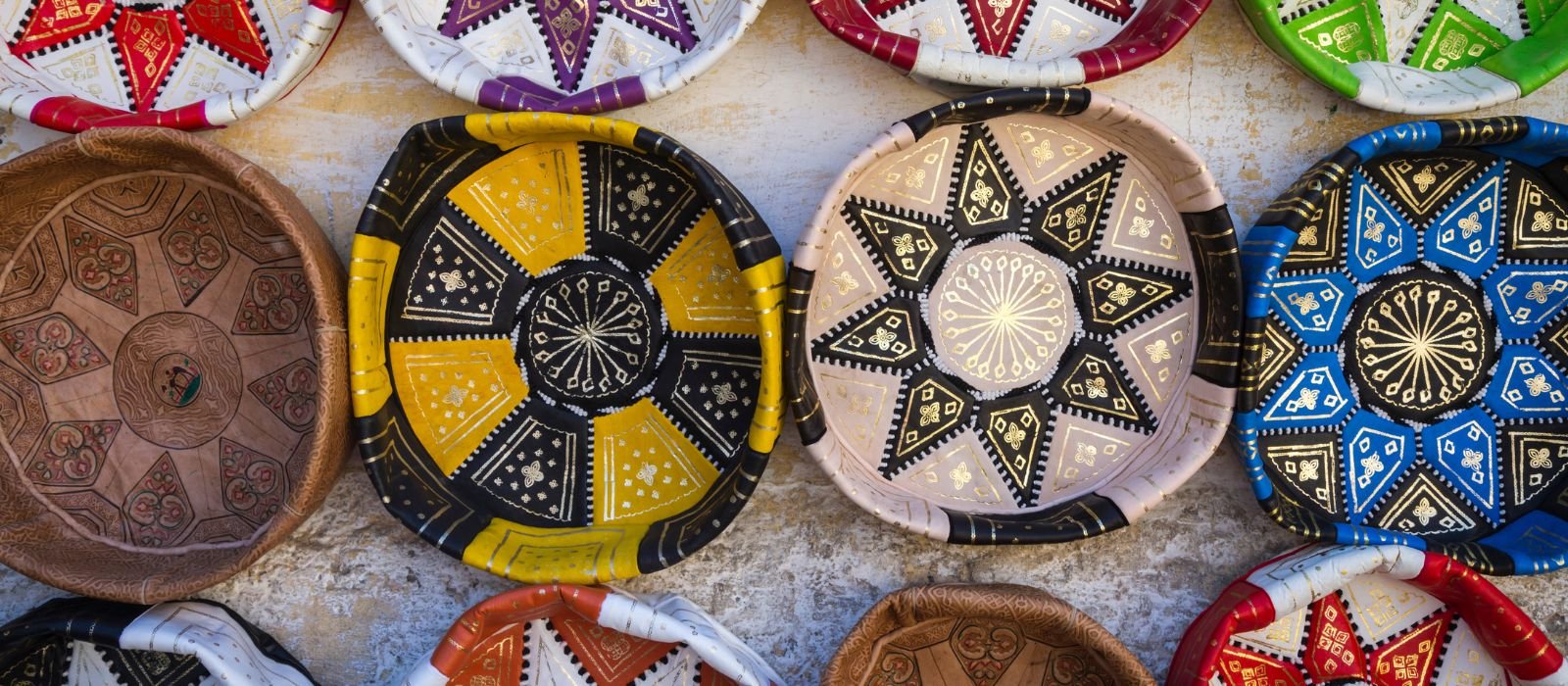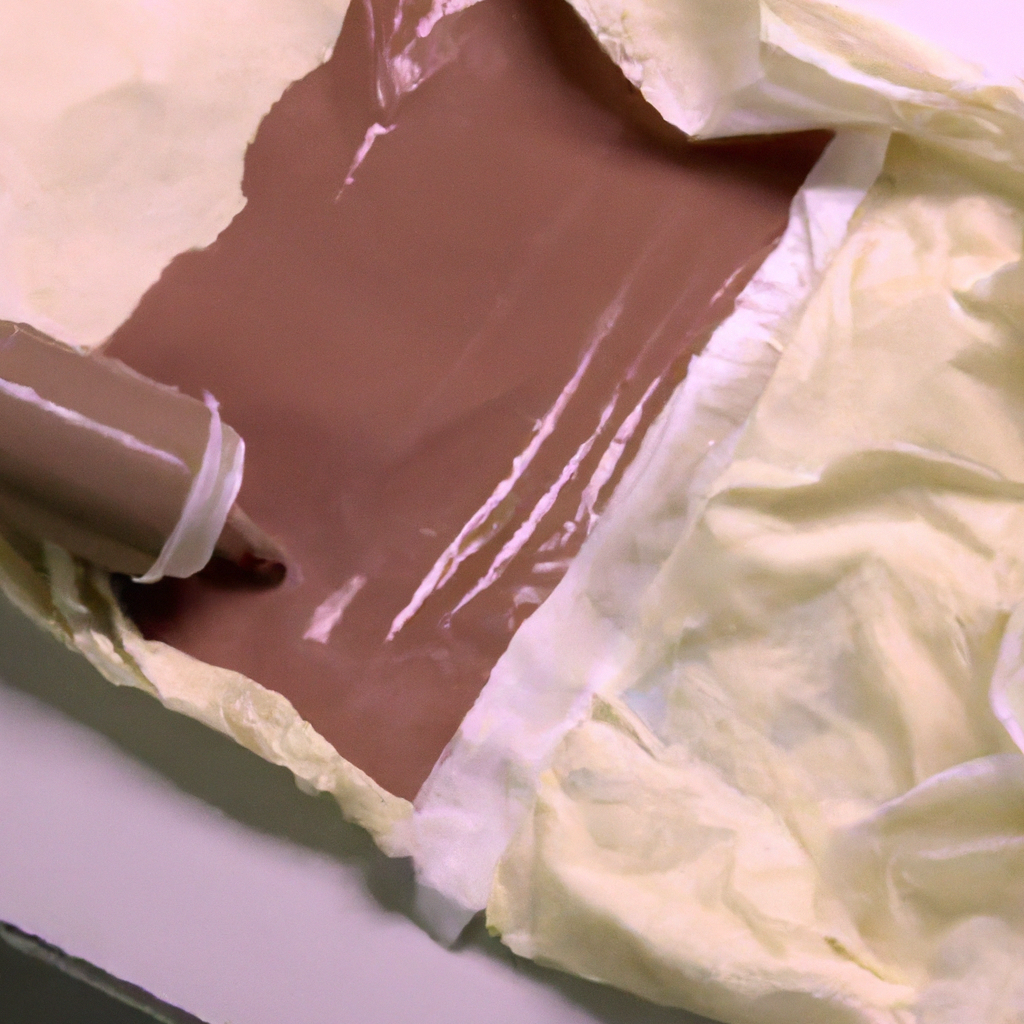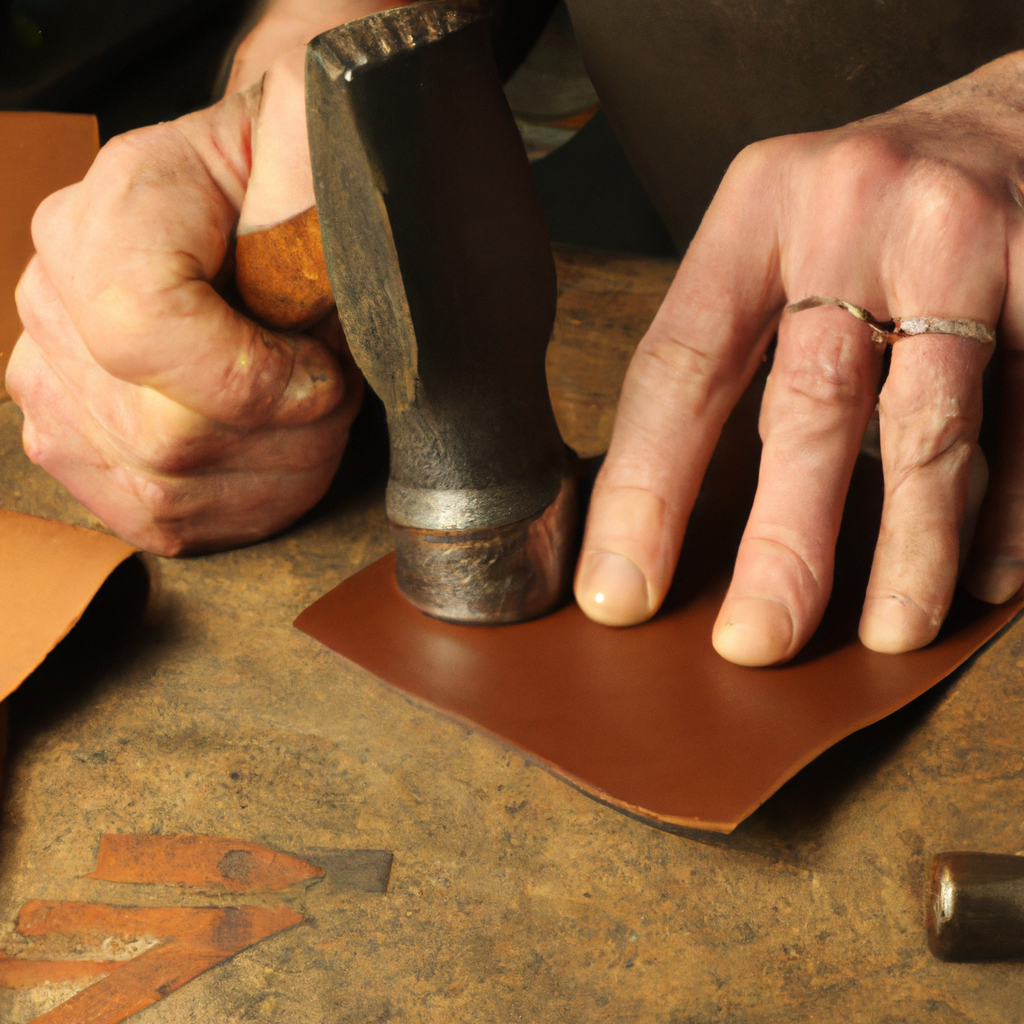The Process Of Sublimate Leather
Leather is a timeless material used for centuries to make various objects, from clothing and shoes to furniture. Can you sublimate Leather? Yes, you can clean Leather. That’s right; the unique combination of heat and pressure can transfer images onto Leather! I’m here to explain this process, how it works, and what items are suitable for sublimating with Leather. The term “sublimate” may sound like a complex science experiment or something out of a chemistry textbook – but don’t worry: it isn’t nearly as complicated as it sounds! Sublimation is quite simple; you only need special equipment, such as a heat press and some transfer paper explicitly designed for use on Leather. The paper gets placed between the item being decorated (Leather) and the upper platen of the heat press, which then simultaneously applies heat and pressure. The result is beautiful imagery being transferred directly into the grain & texture of the Leather itself! Sublimated Leather can be used for various applications, such as custom-designed wallets, purses/bags, jackets/coats, belts, and hats…the possibilities are endless! With just a few clicks online or at your local craft store, you could have access to everything needed to begin creating one-of-a-kind pieces made from genuine Leather. In the following sections, we’ll take an even closer look at exactly how this incredible technique works – so let’s get started!Definition Of Sublimation
Sublimation is like chemical alchemy, transforming solid materials into a gas without passing through the liquid. It’s a thermal transfer process that involves heat and pressure to create outstanding visuals with Leather. The fabric’s fibers become infused with vibrant colors and patterns using specialized dye sublimation printing techniques. This method has been used for years in various industries, from t-shirt printing to custom apparel branding – but it only recently became famous as an art form in its own right. Sublimation is now widely considered an effective way to achieve beautiful designs on leather goods such as wallets, handbags, belts, and jackets. The key to successful sublimation lies in finding the perfect balance between heat and pressure – too much or too little can lead to poor results or damage your material. Using this fascinating technique, you can see what works best with careful experimentation!Types Of Leather
Leather is a classic and timeless material used in fashion, home decor, accessories, and more. Sublimation can elevate Leather’s look by adding color and texture through a heat transfer process. The type of Leather you choose will determine the success or failure of your sublimation project. There are four main types of Leather: cowhide leather, full-grain Leather, suede Leather, and embossed/patent leather. Cowhide Leather is one of the most common types used for projects involving sublimation; it has been around since ancient times because it’s durable yet malleable enough to craft into many shapes and sizes. Cowhide is also known for its unique grain pattern that makes each piece unique and adds character to any design. Full-Grain Leather stands out from all other types due to its natural finish with no buffing or sanding involved during production; this means that all imperfections like scars or wrinkles remain intact throughout the process. Full-grain Leather is often considered superior quality as it ages gracefully over time while still retaining its strength – perfect for those looking for long-lasting durability in their product! Suede Leather is created when the hide’s top layer is removed during tanning, revealing a soft interior surface with a velvety nap that gives an elegant impression. Suede is surprisingly resilient despite its delicate appearance making it ideal for garments and luxury items such as bags or wallets. However, it is not recommended on pieces that require frequent cleaning as water may cause irreversible damage over time. Embossed/Patent Leather takes regular cowhide hides and then goes through different processes, including coating them with resins or plastics before stamping patterns. Hence, they have a smooth glossy finish. This type of Leather offers plenty of options when it comes to customization as there are countless designs available ranging from basic textures like crocodile skin up to complex artwork prints depending on what you want! However, remember that these materials tend to be relatively stiffer than regular hides, so ensure you take extra care when handling them during your projects! Sublimating onto different types of Leather requires careful consideration and expertise to achieve successful results while preserving the integrity of the material itself – but once mastered, it can produce beautiful works worthy of admiration!Preparation For Sublimation
Creating the perfect leather sublimation project is possible but requires careful preparation. With the right tools and simple steps, you can ensure your design comes out strictly as intended. From selecting the right heat press to applying adhesive tape with care, here are some essential tips to get ready for sublimating Leather: * Heat Press Selection: Choose a heat press that meets or exceeds your temperature and time needs. It’s also essential to select one with an even heating platform to ensure consistent results across the entire surface of the material. * Transfer Paper & Sublimation Ink: Select inkjet transfer paper specifically designed for use on leather substrates and compatible with your chosen ink type. Ensure you have enough sublimation ink so that all colors come through clearly in your design when printed onto the paper. * Adhesive Tape & Leather Conditioner: To prevent any damage from occurring during pressing, apply several layers of adhesive tape around the edges of the leather piece before placing it into the heat press. Also, be sure to condition your Leather with a quality leather conditioner beforehand – this will help keep it soft and pliable while reducing color fading over time due to sun exposure. These are just a few key points to remember when preparing for sublimation projects involving leather materials. When done correctly, these techniques will give you beautiful results every time!Process Of Sublimation On Leather
Sublimation on Leather is a specialized technique requiring specific materials and equipment. The process involves using heat to transfer an image or design onto the leather surface. Temperature, pressure, and time must be closely monitored throughout the sublimation process to produce optimal results. To begin, selecting quality leather that has been adequately cleaned and prepped for sublimation is essential. This includes ensuring that all oils have been removed from the material since they can interfere with how well the ink adheres. Once this has been done, you’ll need to cut the desired shape of your project piece out of the Leather before proceeding further. The next step is applying the special sublimatable ink to one side of the piece, followed by coating that side with a protective paper or film explicitly designed for use with sublimation projects. Place this coated side against a flat heat press plate and cover it with another protective layer before pressing down firmly at high temperature for several minutes. After removing from the press, peel away both layers of protection and inspect your work – if any adjustments are needed, repeat as necessary until satisfied with the final result!Aftercare And Maintenance
Maintaining the quality of your leather sublimation is essential by carefully considering its care and protection. A good example is a small business owner who recently had their logo embossed onto leather wallets. To ensure these wallets stay pristine, they must regularly clean with a damp cloth and use protective sprays or creams. This will help preserve the color and texture of the Leather as well as prevent stains from becoming permanent fixtures on the material. Caring for your Leather also involves regular restoration when needed. Leather can become brittle over time due to exposure to moisture and direct sunlight, so it’s important to apply creams or oils whenever you notice areas beginning to crack or fade. These products will help keep the Leather soft while providing additional protection against further damage. The best way to protect your leather items long-term is through preventive maintenance – avoiding common mistakes like leaving items exposed to extreme temperatures or using harsh cleaning chemicals that could cause discoloration. With regular cleaning and proper storage, you’ll be able to enjoy your leather goods for years to come!Frequently Asked Questions
What Type Of Equipment Is Needed To Perform Sublimation On Leather?
Sublimation on Leather is a unique process that requires specialized equipment. To achieve the desired result, you need to have the right sublimation equipment at your disposal. This includes a heat press, dye sublimation ink, and other materials like special paper for transferring the images onto the leather surface. Regarding leather sublimation, there are two primary components – transferring an image and pressing it onto the material using heat. The first step involves printing an image using dye sublimation ink designed specifically for this purpose. Once printed, a particular type of paper transfers this image onto the leather surface while applying pressure with a heat press. The temperature and duration must be set correctly depending on how thick or thin the Leather is to get optimal results. It’s also essential to use high-quality products and specific types of presses, such as those that feature. Teflon-coated heating surfaces so that any accidental contact between them won’t damage both items. Considering all these factors, you can expect beautiful designs that stand out from ordinary leather pieces.How Long Does The Sublimation Process Take?
Sublimation is a process of applying a dye to Leather, and it’s essential to know the duration of this process. Generally speaking, sublimation time depends on several factors, such as the size and thickness of the item being treated with the dye. To give you an idea of what to expect when performing leather sublimation, here are some key points: * Sublimation Duration: * Small items (e.g., wallets) typically take around 15 minutes for the entire process. * Medium-sized items (e.g., bags or jackets) usually require about 30 minutes to complete. * Large pieces (e.g., furniture upholstery) may need over 60 minutes, depending on their size and complexity. * Preparations: Depending on the item being treated, properly clean it beforehand so that no dirt or debris will interfere with applying the dye during the sublimation process. This will also help ensure even coverage throughout each piece. * Finishing Touches: Once you’ve finished applying your chosen color/patterns onto your leather piece(s), be sure to allow sufficient drying time before handling them again – at least 24 hours in most cases – to avoid any unwanted smudges or markings that could ruin its overall look and feel. The amount of time it takes to complete a successful leather sublimation job can vary significantly from one project to another due to different variables involved in both prepping and finishing stages. Having patience is essential if you want optimal results! It’s always best practice to wear protective gear while working since dyes contain chemicals that can be harmful if inhaled directly or come into contact with skin surfaces too often without proper protection. With these tips in mind and enough practice, anyone can become skilled at executing flawless leather sublimation projects every single time!Is The Sublimation Process Permanent?
Regarding leather sublimation, the pressing question is often whether or not the process is permanent. The short answer? Yes! Sublimating Leather provides a lasting imprint that can stand up against wear and tear, as well as water and sun damage. Many professionals in this field consider sublimated Leather one of the most durable materials – making it an excellent choice for items like jackets and bags exposed to outdoor elements. The key lies in understanding how sublimation works: special dyes penetrate deep into fibers of natural materials such as fabric or Leather when heat is applied at high temperatures. This creates an image that won’t fade over time but stays locked in place even after washing or exposure to different weather conditions. The result? A waterproof and fade-resistant design that will last for years without any signs of degradation. Sublimation on Leather isn’t just about long-term durability; it’s also a great way to add vibrant colors with sharp details while retaining the original texture of the material itself. With proper care and maintenance, you’ll find a finished product that looks exactly like what you envisioned from day one – no need for reapplication or retouching required! As a professional in this industry, I’m confident saying whatever you choose to create will stay looking great for years down the road.What Type Of Images Can Be Sublimated On Leather?
Sublimation printing on Leather is a great way to add images and graphics that won’t fade over time. The process involves dyeing the Leather with special inks heated at high temperatures, which transfer into the Leather’s texture for a permanent image. This type of heat transfer is an innovative solution for those looking to customize their leather goods without sacrificing quality or longevity. Because sublimation ink is specifically designed to bond with the fibers of Leather, it can produce some truly stunning results. From complex geometric patterns to bold logos and intricate details, virtually any design can be printed onto Leather using this method. Depending on your desired look, you may incorporate elements like foil stamping or embossing alongside the print. When considering what kind of image to use for your project, remember that subtler designs will better suit the material’s natural grain. At the same time, more intense prints work best when applied directly onto smooth surfaces. Regardless of your needs, sublimation printing offers durable solutions for customizing almost any piece of genuine Leather – making it easy to create something unique!Is Sublimation On Leather More Expensive Than Other Methods?
Sublimation on Leather is like a canvas—it can create beautiful, intricate images lasting for years. But sublimating Leather may not always be the most affordable option when it comes to cost. To understand what methods are more economical, let’s break down the price of leather sublimation versus other techniques: * Leather Sublimation Cost: * Price per unit: This depends on many factors, such as size and design complexity, but generally ranges from $2-6 USD per item. * Setup and printing costs: These fees vary based on supplier and equipment costs and could range anywhere from $50-USD 200, depending on the quantity ordered. * Sublimation vs. Other Methods: * Heat Transfer Vinyl (HTV): HTV usually has lower upfront costs than sublimation since no particular printer or ink is required; however, it tends to have a shorter lifespan due to fading over time compared with sublimate prints which remain vibrant much longer.* Screen Printing: While screen printing often offers higher quality results than vinyl transfer, it also requires specialized machinery and materials, making it pricier than other methods. Additionally, setup fees are higher than those associated with sublimation or HTV alternatives. For any expert in leather sublimation, the decision between options boils down to understanding how long an image needs to last for each project. If longevity isn’t critical, cheaper methods might work best; however, if you’re looking for a product that will keep its vibrancy over time, investing in leather sublimation would likely be worth considering, given its solid track record of durability.Can you use sublimation to decorate a leather dice cup?
Yes, you can use sublimation to decorate a leather dice cup. In this leather dice cup tutorial, you can learn how to transfer colorful designs onto the leather surface using sublimation printing. This technique allows you to create unique and personalized dice cups for your gaming sessions.








